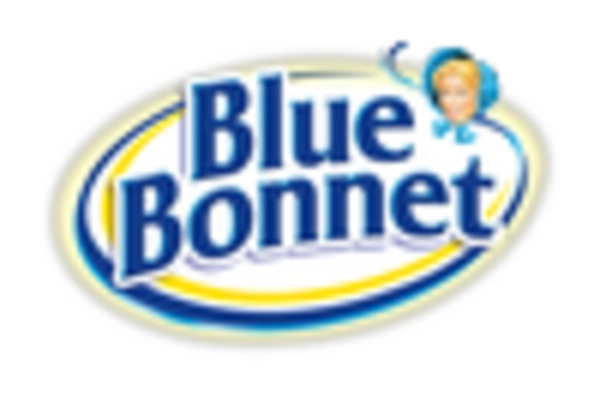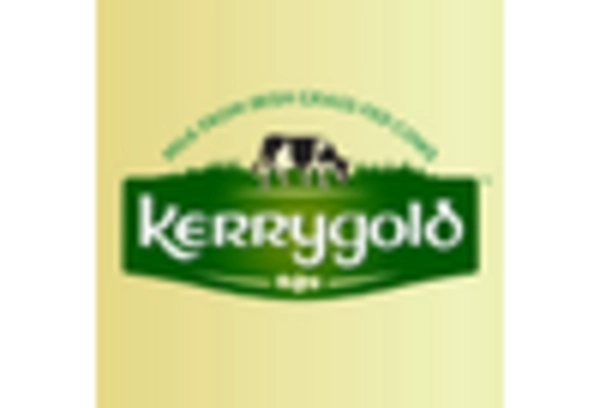Innovations in Dairy Processing
Advancements in dairy processing technology play a crucial role in the expansion of the Global Lactose-Free Butter Industry. Innovative techniques, such as enzyme treatment and ultrafiltration, enable manufacturers to produce high-quality lactose-free butter that retains the desirable characteristics of traditional butter. These technological improvements not only enhance product quality but also increase production efficiency, allowing for a broader range of lactose-free products to enter the market. As consumer preferences evolve, the ability to offer diverse and appealing lactose-free options becomes essential for market growth, potentially leading to a compound annual growth rate of 8.02% from 2025 to 2035.
Health Conscious Consumer Trends
A notable shift towards health-conscious eating habits among consumers is influencing the Global Lactose-Free Butter Industry. Individuals are increasingly prioritizing dietary choices that align with their health goals, leading to a preference for lactose-free options. Lactose-free butter is perceived as a healthier alternative, appealing to those looking to reduce dairy intake without sacrificing flavor. This trend is further supported by the rise of plant-based diets and the growing awareness of the benefits of lactose-free products. As a result, the market is expected to grow significantly, with projections indicating a value of 551.9 USD Million by 2035.
Rising Lactose Intolerance Prevalence
The increasing prevalence of lactose intolerance globally drives demand for lactose-free products, including lactose-free butter. It is estimated that around 68% of the world's population experiences some form of lactose malabsorption. This condition is particularly common in regions such as Asia and Africa, where dairy consumption is traditionally lower. As awareness of lactose intolerance grows, consumers are actively seeking alternatives that do not compromise on taste or quality. Consequently, the Global Lactose-Free Butter Industry is witnessing a surge in demand, contributing to its projected market value of 236.2 USD Million in 2024.
Regulatory Support for Healthier Food Options
Government initiatives and regulations promoting healthier food choices contribute to the growth of the Global Lactose-Free Butter Industry. Many countries are implementing policies aimed at reducing lactose consumption and encouraging the production of lactose-free alternatives. These regulations often include subsidies for manufacturers producing lactose-free products, thereby incentivizing innovation and market entry. As a result, the lactose-free butter segment is expected to benefit from such supportive measures, fostering a conducive environment for growth and expansion in the coming years.
Increased Availability of Lactose-Free Products
The growing availability of lactose-free products in retail and foodservice sectors significantly impacts the Global Lactose-Free Butter Industry. Supermarkets and specialty stores are increasingly stocking lactose-free butter, making it more accessible to consumers. Additionally, foodservice establishments are incorporating lactose-free options into their menus to cater to the rising demand. This increased availability not only enhances consumer choice but also encourages trial and adoption of lactose-free butter. As more consumers become aware of these options, the market is likely to expand, reflecting the changing landscape of dietary preferences.

















